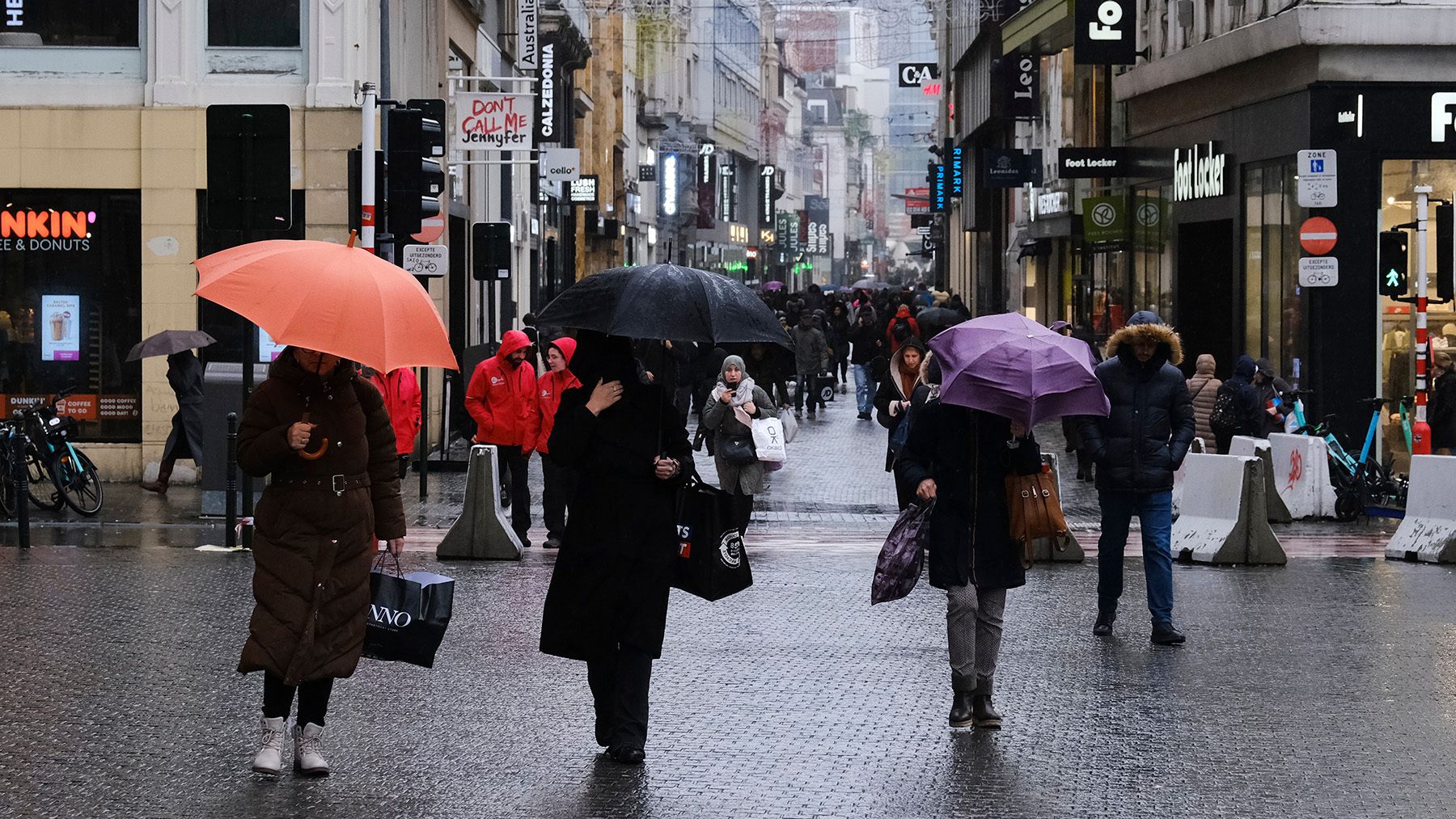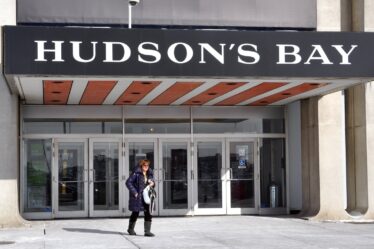
Retailers are coming to grips with the end of cheap loans.
Central banks around the world are hiking interest rates as they fight the highest inflation in four decades. In the US, the Federal Reserve has set its benchmark rate, which determines borrowing costs across the economy, at 4.75 percent to 5 percent, a level not seen since 2006, with another quarter-percentage-point increase expected in May. In the UK, the Bank of England, too, has hiked interest rates, to 4.25 percent as of March.
For consumers, higher rates translate to more-expensive mortgages and higher interest on their credit card balances. That leaves less money for discretionary expenses, including new sneakers and sweaters. Retail giants are already feeling the pain: companies including Gap Inc. and Michael Kors-owner Capri posted sales declines in the fourth quarter.
For retailers, the Fed’s moves are forcing a mindset shift. From 2008 onward, interest rates were near zero, meaning many companies gave comparatively little thought to the cost of borrowing. Now, debt payments are a much bigger factor when deciding whether to expand into a new market, open a store or launch an online advertising campaign. Many face a difficult choice: scale back their plans, or compensate for higher interest payments with savings elsewhere, whether it’s through layoffs, reduced inventory or closing stores.
“In simplest terms, it’s all about capital allocation,” said Dylan Carden, an analyst at investment bank William Blair. “Running a levered balance sheet with debt frees up capital to invest … But when debt costs more, the upside isn’t there.”
Macy’s, Tommy Hilfiger-owner PVH Corp. and American Eagle are among the big retailers that paid down debt in the past year as interest rates rose. The pain is more acute for smaller companies that don’t have the financing options or cash flow of a global chain. And that’s doubly true of companies that borrowed heavily over the last decade when interest rates were near zero, including unprofitable start-ups and brands that were acquired by private equity firms in debt-fuelled transactions.
As loans come due, those firms will have to refinance at higher rates or divert cash to pay down debt that was once earmarked for growth strategies. It’s a trap that can be hard for companies to escape. Bankruptcies are on the rise; last month, Standard & Poor’s said private equity-owned companies are filing at their fastest pace since 2020.
In this environment, making the best decisions regarding debt and cash flow is essential. That can mean offering the right concessions when negotiating with lenders and knowing which projects are worth the added interest expense — and which can be postponed.
Weighing the Options
For companies facing debt that’s due in the near term, they have two main options: to refinance at a higher interest rate or pay down as much of it as possible. In order to make this decision, it’s critical for companies to assess the needs of the business.
“If you had to allocate free cash flow toward debt, it means less money to go toward building technology, pricing models, hiring and distribution channels,” said Carden.
If there aren’t short-term business improvements needed, retailers may opt to pay off their debt now to save cash in the long run. In recent quarters, American Eagle Outfitters, Capri, Nordstrom, PVH and off-price retailer Burlington Stores retired debt.
Plus-size retailer Torrid Holdings, meanwhile, said it’s preserving cash for building the business rather than paying down debt early.
“Any excess cash we have right now is going to be focused on growing the business,” Tim Martin, the company’s chief operating officer and chief financial officer, said earlier this month in response to a question from an analyst about whether the retailer planned to pay down debt this year. “That’s the number one focus as of today.”
Retailers that refinance may pay more each year in interest but protect their cash flow to fund investments. The gamble here is that these projects will yield higher returns than the interest rate on the debt used to pay for them. That grows more difficult when rates are higher.
Or, if there’s a particularly urgent problem or a can’t-miss opportunity, companies can always borrow more, even at today’s rates. VF Corp., whose Vans brand has struggled recently, took on two new loans in February totalling $1 billion to fund product innovation and sustainable materials, as well as to pay down short-term debt, the company said.
Setting Priorities
The metric to determine which path to take is called WACC, or the weighted average cost of capital.
“It measures what [rate] retailers can borrow money at and the opportunity cost of not investing in whatever project they need the debt for,” said Kelly Pedersen, who leads PwC’s US retail practice. “What we’re finding is that the hurdle rate to make an investment has increased, meaning you have to show higher returns on an investment to justify it.”
Whether a levered company chooses to refinance or not comes down to understanding the needs of the business.
“One of the first things we would counsel is to look at the investments you have to make, the investments where, if you don’t make these, it will harm the core business,” said Joel Rampoldt, partner and managing director in the retail practice at consultancy AlixPartners.
This could be refurbishment in stores or e-commerce software that enables inventory tracking, but if they’re not fit for purpose, he added, “you’re not meeting customer expectations.”
For instance, a company might borrow to pay for a new customer-data analytics platform that would enable a retailer to deliver more effective marketing to consumers. If it results in a quick boost in sales that recoups the project’s cost, it’s borrowed money well spent.
Other business improvements, such as a new human resources system or financial reporting software, may increase efficiency among employees but won’t directly result in higher sales or profits. These are the projects that retailers often defer when borrowing costs rise, though too little investment on these fronts can cause problems over the long run.
Negotiating With Lenders
An alternative to using cash to pay down a loan is a debt-for-equity trade, a common practice in which debtors receive a stake in a company for either retiring the loan or changing the structure of the debt.
Earlier this year, Rent the Runway announced it was able to restructure its debt to push back the maturity date from 2024 to 2026 and delay the steepest interest payments without changing the total interest rate of 12 percent. As part of the deal, its lender will be able to purchase 2 million shares of its Class A stock.
Restrictive covenants are another option, where the retailer agrees to limit certain actions or reach performance standards in exchange for more favourable terms on its loan. For instance, a brand could promise its lender not to open new stores unless it maintains a certain level of cash flow. In return, it would get a reduction in its interest rate or an extension on payments. Lenders sometimes insist on final approval of management changes, acquisitions, assets sales and dividends.
Retailers can also tie favourable loan terms to business performance, such as reaching a level of comparable-store sales every quarter. If the standard is not met, the retailer would agree to pay extra interest. This practice is less common, Rampoldt said, because it could become dangerous when the retailer struggles.
Regardless of whether a company faces the prospect of refinancing, it’s critical to preserve cash in an economic downturn. One way to increase cash flow is to reduce the amount of inventory commitment, Pedersen said.
“Even a small amount of inventory reduction, 5 percent or less, could result in saving tens or hundreds of millions of dollars,” he said.
Ultimately, the most important task at hand is to drive profitability while keeping operations as efficient as possible.
“Managing the business and operating as a really good retailer, that comes first,” Rampoldt said. “Simply being a good performer makes all the questions regarding financing much easier to solve.”



